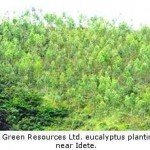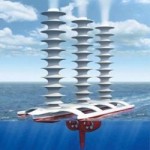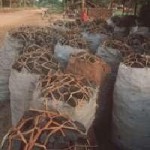This is an old article dated April 2005 written by Dr. Jan Szewczyk of Polish Geological Institute. We have featured it on ThinktoSustain, since it serves as background information and prelude for the current day research (ongoing) report featured at the link:
Not only research on ice cores from Antarctica or Greenland can be a source of valuable information about the climate on the Earth hundreds of thousands of years ago. It appeared quite recently that a unique geothermal-hydrochemical anomaly observed in north-eastern Poland, within the so-called Suwalki Anorthosite Massif, may significantly broaden our knowledge about the palaeoclimate. Research results will also help to identify factors influencing the recent thermal regime of the Earth.
Climatic changes and related temperature variations of the Earth’s surface result in changes in lithosphere temperature – both within near-surface strata and in deep zones of sedimentary and crystalline rocks resting several kilometers beneath the ground surface.
How is it Possible?
The reason is very low velocity of thermal energy transfer in rocks. It enables preservation of information about climatic changes on Earth in the distant past, recorded at depths of several hundreds to thousands of meters.
The last glaciation, that ended approximately 14,000 years ago, even now influences the thermal regime of outer zones of the Earth’s crust.
The Suwalki Anomaly
In the mid-1970s, a distinct temperature inversion was recorded in a number of deep bore-holes drilled in crystalline rocks of north-eastern Poland in search for polymetallic (iron-vanadium-titanium) ores.
Bore-hole temperatures, instead of increase with depth, showed a decreasing trend! The minimal temperature was observed in Lower Cretaceous sandstones whose top surface occurs here at depths of 380-440 m.

Temperature inversion in bore-holes drilled in the Suwalki Anorthosite Massif
(Click here for Enlarged Image)
At that time, a hypothesis was proposed that this phenomenon might have been related to the last glaciation. It was claimed that the temperature inversion was caused by deep infiltration of cooled post-glacial waters originating from melting of an ice sheet (Majorowicz, 1976, 1982). Scientific considerations, associated with an analysis of groundwaters in Mesozoic deposits, allowed to put forward a hypothesis, innovative of its time, that the very deep permafrost occurs in this area (Michalski, 1985). It was stated that the observed types of groundwater are the result of cryogenic alterations. Estimates were made that the permafrost reached a depth of nearly 600 m.
It was quite recently that scientists, based on analyses of heat flow variations, discovered that thermal disturbances related to Pleistocene-Holocene climatic changes are recorded in bore-holes practically throughout the entire area of Poland.
Renewed investigations of the Suwalki geothermal-hydrochemical anomaly, conducted in association with the Geophysical Institute of the Academy of Sciences of the Czech Republic, confirmed that the anomaly is related to the deep permafrost that occurred in this area in the past. This is the only site yet recognized in Central Europe where signs of so deeply seated permafrost has been directly detected. It also proves that mean annual temperatures were very low in this area during most of the late Pleistocene.
A Warming – But How Strong?
Although a lot of information about climatic conditions during the last glaciation has lately been collected, the average value of mean annual temperatures for that period still remains a very controversial issue. Research methods such as pollen analysis, measurements of oxygen (18O/16O) and hydrogen (D/H) isotopic ratios, as well as tree-ring dating and investigations of deep-water sediments are the methods of indirect determination of palaeotemperature – they require calibration to the temperature scale. The precision of these methods dramatically decreases for stadial (cool) periods, dominant in the climatic interval considered.













